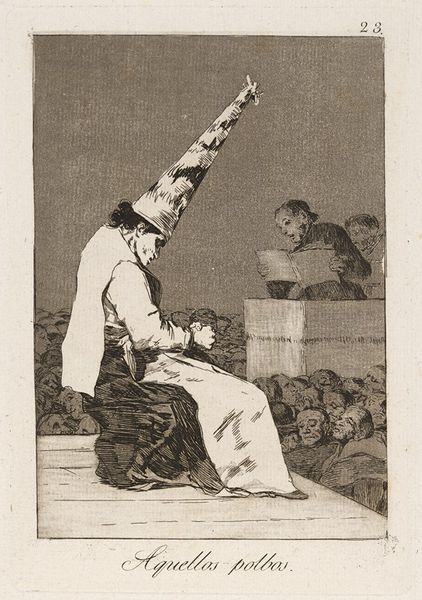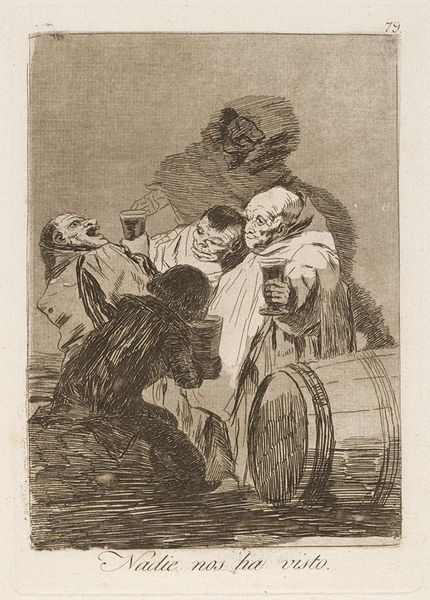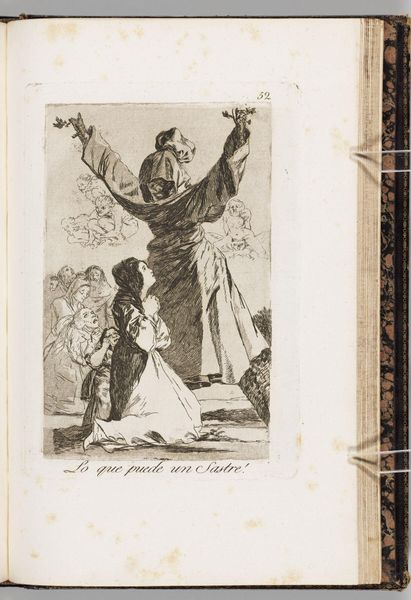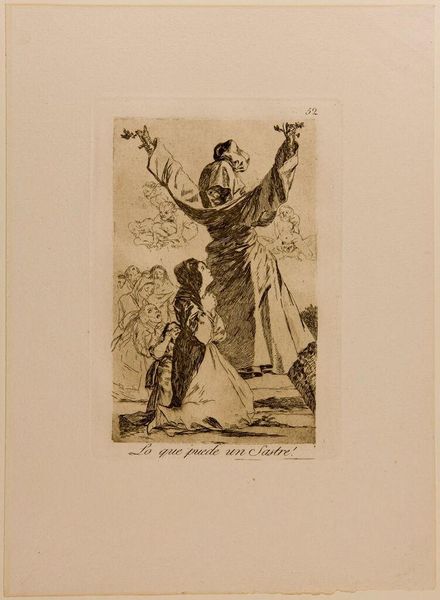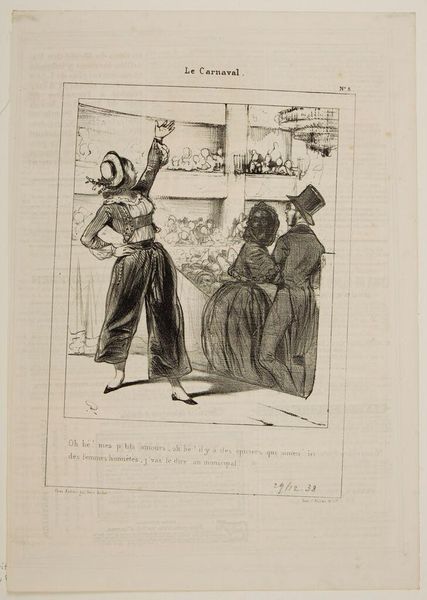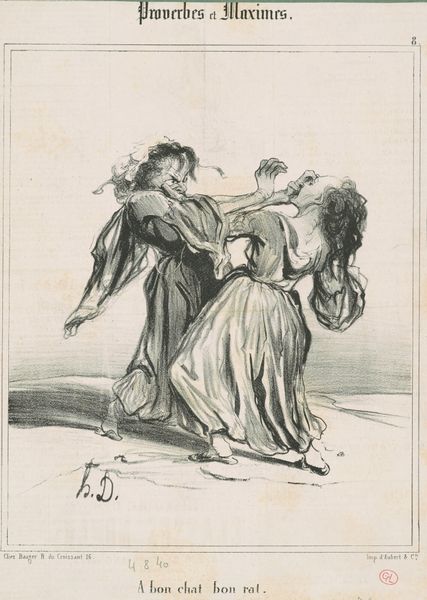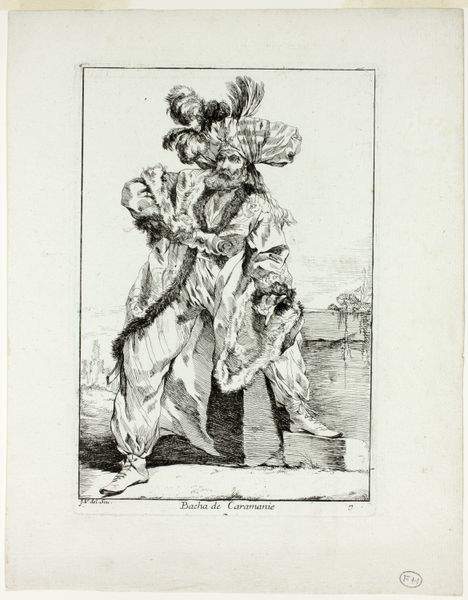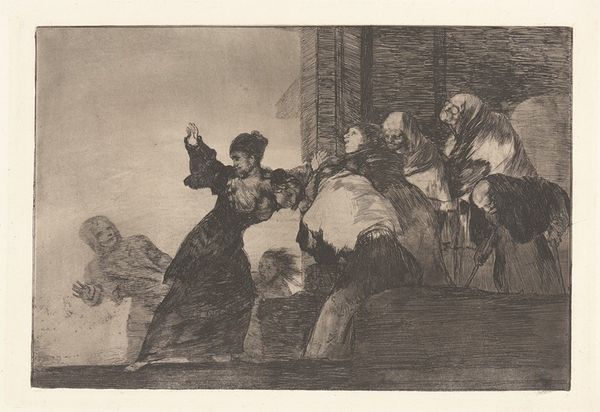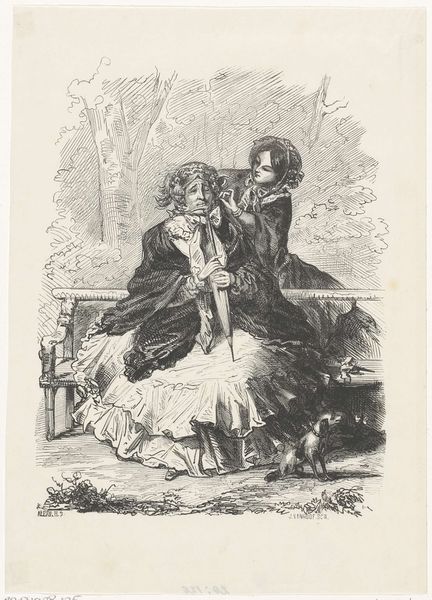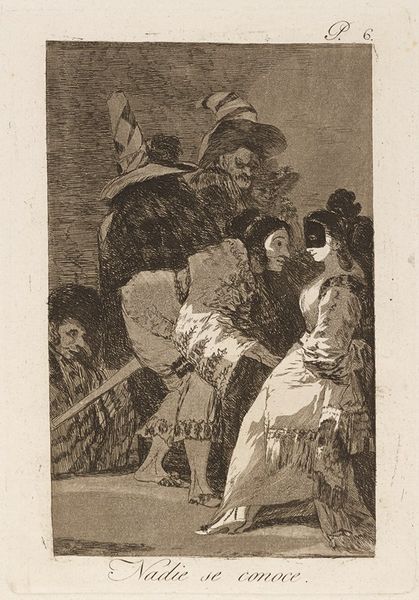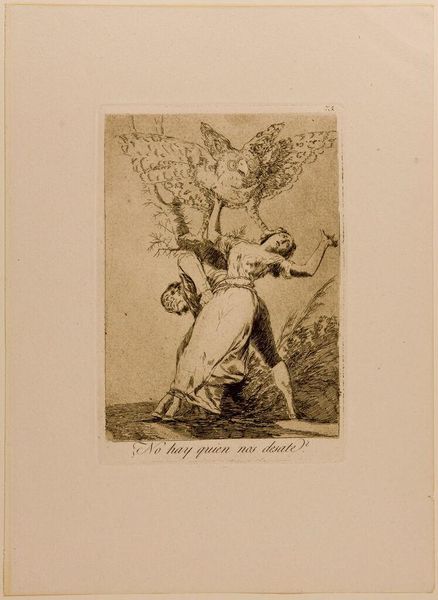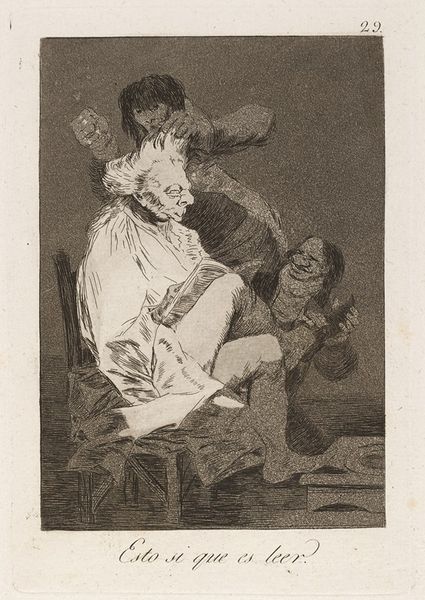
print, etching
#
allegory
#
narrative-art
# print
#
etching
#
figuration
#
romanticism
#
genre-painting
#
history-painting
Copyright: Public Domain: Artvee
Curator: This etching, "Lo que puede un Sastre!" which roughly translates to "What a Tailor Can Do!" was created by Francisco de Goya around 1796-1797. It's quite a provocative piece, wouldn't you agree? Editor: Provocative is an understatement! My gut reaction? A touch unsettling, like a dream teetering on the edge of nightmare. That looming figure is...well, rather overwhelming. What are we actually looking at? Curator: Indeed! It’s part of Goya's "Los Caprichos," a series of prints that critique the absurdities of Spanish society. It uses allegory to address political corruption, social injustices, and the abuses of power. Specifically, the satire seems to target the aristocracy, their pretenses and those elevated without merit. Editor: So, the tailor...becomes a king or some powerful figure, fueled by ridiculous circumstances? It hits at the farcical nature of authority. Plus, it’s all done with such deftness; I love how expressive the faces are. Curator: Absolutely. The group of figures to the left is especially potent. Goya uses his skill with aquatint and etching to great effect. I am interested in looking into its critique of power structures and their construction during times of great socio-political turbulence. This specific etching reveals some things about gender and societal power as well, specifically for the kneeling woman. Editor: I also notice the sort of winged cherubs hanging in the sky above. Are they putti? If so, the contrast between their innocent imagery and the somber, serious subjects of this scene only further serves to amplify the underlying strangeness. Curator: Yes, the cherubs add an ironic layer, mocking the idea of divine approval for such a ridiculous figurehead. Editor: So much contained in such delicate lines. It's hard to believe Goya did this so long ago, the message resonates. Curator: Precisely. And looking at how this artwork and so many of Goya's pieces comment on themes and topics we still reckon with makes this art so important to explore in modern contexts. Editor: Agreed, these images offer something timeless, even in their specific criticisms. It has to do with revealing what a fraud authority can be! Food for thought for all!
Comments
No comments
Be the first to comment and join the conversation on the ultimate creative platform.

